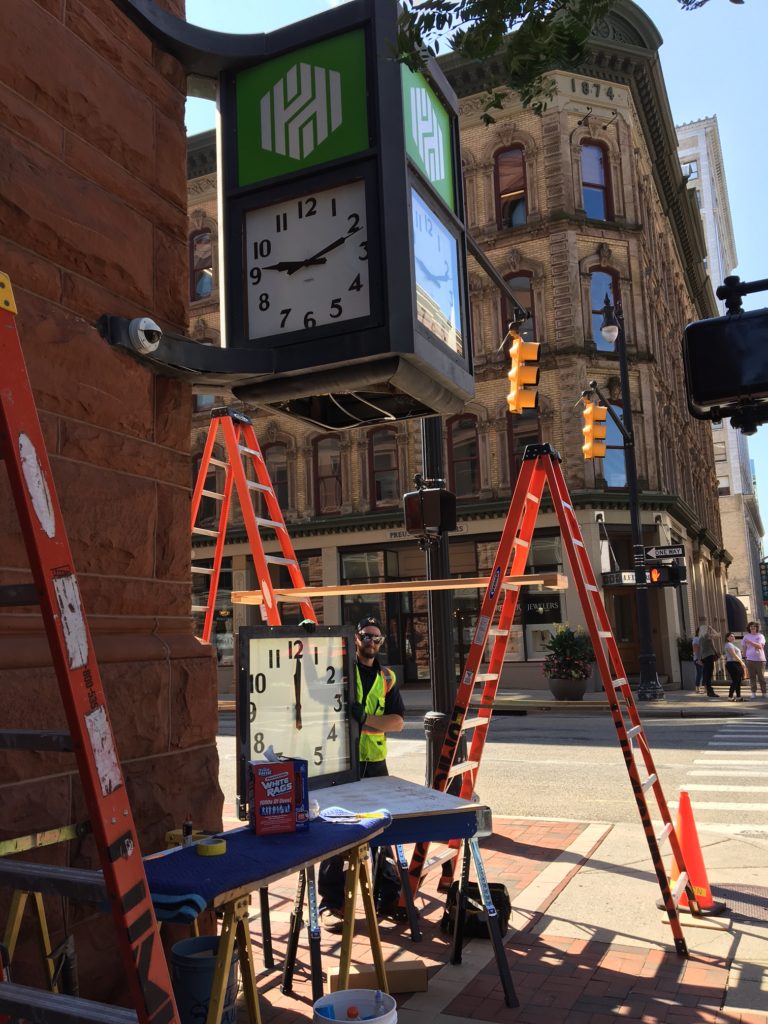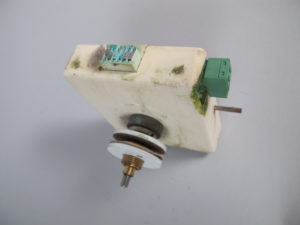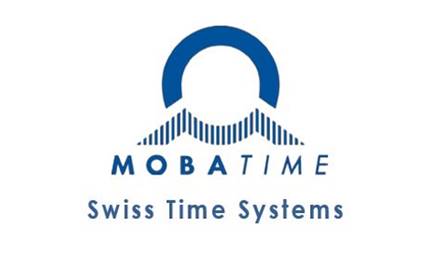A surprise when servicing a vintage McClintock-Loomis Clock

Over 10 years ago we installed a set of 4 MOBATIME NU-90t 24v impulse-drive slave clock movements in this heavily re-worked McClintock Loomis antique clock/sign combination, on the corner of Pearl and Ottawa Ave, in Downtown Grand Rapids, Michigan
There was only one intact dial, clock hands, and copper cladding, now painted bronze, left of the original clock. A new master clock controller, Mobatime Type HN-50, was installed in the basement of the building quite some distance from the actual clock and we re-used all the old wiring for the 24v bi-polar impulse-drive. We also made new clock hands to match the original, carefully balanced.
The original manufacturer of the clock made the frame, which surrounds the glass dial crystal or cover, of ¼” x 3” angled aluminum; it’s all in one piece for removal, fastened with 12 bolts through the front. The assembly weighs appx. 75 lbs! Not the easiest to remove especially when on a ladder. A good lesson that a hinged cover is always a good idea, for eventual servicing.
Everything worked great and we had not heard from them for around 10 years…

Well, just last week we received a service request for the same clock. One of the faces had stopped. Upon inspection, we were amazed it lasted as long as it did. The movement showed signs of a lot of water ingress judging from the mold and copper oxidization of the DIP switches. The ill-fitting sign panels and poorly caulked roof cover were the culprits for the water leaks. Although a completely waterproof cabinet is not a good idea because some ventilation is good for temperature swings, condensation, etc, this was a sieve!
So… for what it’s worth, it demonstrated how long the MOBATIME movement worked under very adverse conditions – in Michigan no less, with horrible winter conditions. It’s also the first movement of this type we have had to replace since we started carrying MOBATIME products. One for the notebooks…

